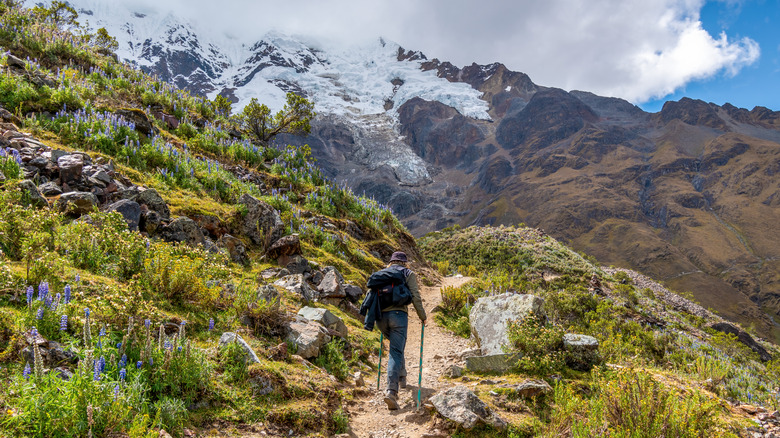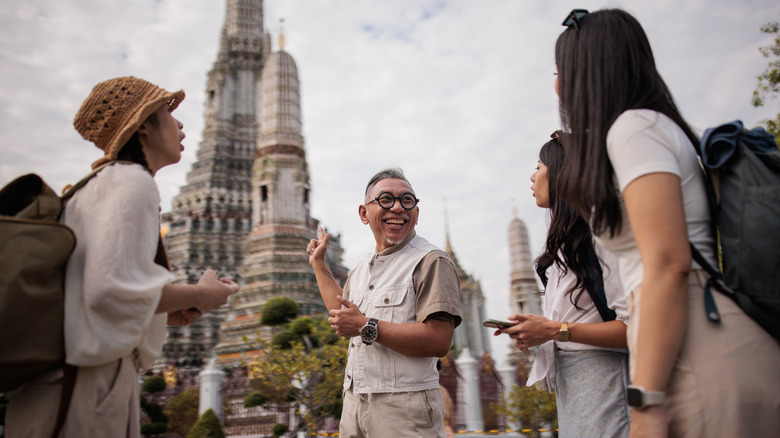Why You Should Think Twice Before Letting AI Plan Your Next Trip
As artificial intelligence (AI) technology continues to evolve, people are finding uses for it in more and more aspects of life. From sorting and drafting emails to creating images based on text descriptions, AI capabilities range from helpful to controversial. Some travelers have even used AI to plan trip itineraries. They tell ChatGPT or travel-specific AI tools like Mindtrip where they want to go and include things like budget details or transportation preferences in the prompt. This can work out well, as the AI program can plan the place-to-place logistics and offer hotel options faster than a Google search. However, AI has been known to get things wrong, and AI travel planning is no exception.
Some potential shortcomings of AI lie in the details. Judy Gauthier of Go City put AI to the test for her Great Smoky Mountains National Park road trip. When prompted to suggest waterfalls she could walk to in the park, the AI tool suggested Laurel Falls Trail. "Unfortunately, I later learned via a Smokies Facebook page that the trail was closed for an 18-month rehabilitation project," Gauthier told HuffPost. Of course even without AI research, unexpected things like closed hiking trails happen, but the AI troubles don't end here.
AI might direct you to places that don't actually exist
More frightening problems arise when AI compiles information incorrectly. Miguel Angel Gongora Meza, the expert hiker behind Evolution Treks Peru, met a couple who were planning on hiking to the Sacred Canyon of Humantay. AI had suggested this place to the tourists, even providing a detailed description. But it does not exist.
"The name is a combination of two places that have no relation to the description," Meza explained to the BBC. He went on to describe how the search wouldn't have simply left these tourists confused, but also in danger. "The elevation, the climatic changes and accessibility [of the] paths have to be planned. When you [use] a program [like ChatGPT], which combines pictures and names to create a fantasy, then you can find yourself at an altitude of 4,000m without oxygen and [phone] signal."
An SEO Travel study revealed that a whopping 90% of AI travel itineraries contain some inaccurate information. The team asked ChatGPT to plan 100 two-day itineraries and then fact-checked the results. It consistently suggested restaurants that were permanently closed, listed activities on the itinerary at times outside their operating hours, and often involved unnecessary detours or back tracking.
AI removes the human aspect of travel experiences
If you use AI to plan a trip, you'll have to do quite a bit of double checking. Perhaps AI should work in tandem with other forms of research, like traditional Google searches, travel blogs, and guidebooks. You can also use local public transportation websites and reliable map apps to verify both the types of transportation available and what routes you can take. This will ensure that AI did not present you with out of date information, another AI problem travelers noticed.
While things like increased air pollution from the huge computer processing centers behind AI is a pressing issue, an overarching concern is the loss of human creativity and interaction. These things might not sound relevant to tools that make planning your vacation itinerary easier, but many argue that nothing replaces lived experiences by real humans. Whether you use AI to plan a trip or not, it's helpful to consult the opinions and advice from humans who have actually visited the destination and went through the logistics themselves. This might include travel agents, bloggers, friends, and locals. Not only will you get access to firsthand information, this process also usually means you're supporting the work of real people in the travel industry who are passionate about helping others have the best trips possible.


